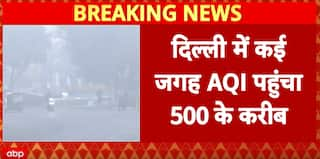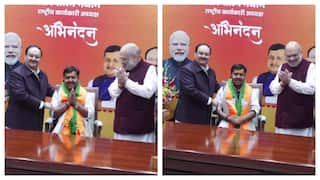Aditya-L1: India's First Solar Observatory Takes Its Selfie, Captures Glimpses Of Earth And Moon
ISRO has released images of the Earth and the Moon captured by Aditya-L1, India's first space-based solar observatory.

The Indian Space Research Organisation (ISRO) has released the first glimpses of the Earth and the Moon captured by Aditya-L1, India's first space-based solar observatory. Aditya-L1 captured its selfie, and recorded glimpses of the Moon and the Earth, as it continued its journey towards the Lagrange point 1 (L1). In the video shared by ISRO, one can see Earth as well as the Moon. Earth's only natural satellite appeared to be a tiny speck compared to the Blue Planet. In the selfie captured by Aditya-L1, the Visible Emission Line Coronagraph (VELC) and the Solar Ultraviolet Imaging Telescope (SUIT) payloads can be seen.
The camera onboard Aditya-L1 captured the selfie and recorded stunning visuals of the Earth and the Moon on September 4, 2023.
ISRO tweeted: 'Aditya-L1, destined for the Sun-Earth L1 point, takes a selfie and images of the Earth and the Moon.'
Aditya-L1 Mission:
— ISRO (@isro) September 7, 2023
👀Onlooker!
Aditya-L1,
destined for the Sun-Earth L1 point,
takes a selfie and
images of the Earth and the Moon.#AdityaL1 pic.twitter.com/54KxrfYSwy
On September 5, Aditya-L1 successfully performed its second Earth-bound manoeuvre. The solar observatory will perform its next Earth-bound manoeuvre on September 10, at around 2:30 pm IST.
Aditya-L1 performed its first Earth-bound manoeuvre on September 3, and reached an orbit of 245 km x 22459 km.
Aditya-L1 is equipped with seven payloads, four of which are remote sensing instruments, and three are in-situ payloads.
MUST READ | Aditya-L1: What Makes India's First Space-Based Solar Observatory To Study The Sun Unique
The remote sensing payloads will serve as spectrometers. Meanwhile, two of the in-situ payloads will act as particle analysers, while one will be a magnetometer.
Aditya-L1’s mission objectives include studying the solar corona, understanding the dynamics of coronal mass ejections, analysing the high-energy particles emitted by the Sun, and determining how solar activities impact space weather in real time. The spacecraft will also study the photosphere and the chromosphere, which are the innermost and the middle layers of the Sun’s atmosphere, respectively.
ISRO launched Aditya-L1 on September 2, 2023, at 11:50 am IST, atop a PSLV-XL rocket, from Satish Dhawan Space Centre, Sriharikota. It will take Aditya-L1 about four months to reach its destination.
Aditya-L1's trajectory to L1 is a complex one, and will involve several twists and turns. After all the Earth-bound manoeuvres are complete, Aditya-L1 will exit Earth's gravitational sphere of influence, and enter the cruise phase. This stage will lead Aditya-L1 towards a halo orbit around L1.
There, Aditya-L1 will have an uninterrupted view of the Sun for the entirety of its mission duration, which is five years.






































